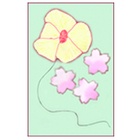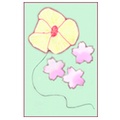Being “half” came to my attention at seven years old. I remember in my second grade class at Geddes Elementary School, each of us shared in front of the class how we celebrated holidays. Most of my classmates, 99% of them, were second generation Christian/Catholic Mexicans. Most of their parents were from Mexico. I remember many of them saying almost the exact same thing. At Christmas, they would go to church with their family, eat their grandma’s tamales, and get lots of presents. Some of my classmates were cousins. I remember feeling left out and wishing I had cousins at the same school.
There was one Filipino girl in my class, Emmelou, who celebrated Christmas and New Years with her entire family at her grandma’s house. I remember Emmelou saying, in a semi-serious tone of voice, that she made sure to thank God for the blessed food, especially her favorite and grandma’s specialty, lumpia. My only other “ethnic” classmate was Steven. His mother was white and father Italian American. His family wasn’t religious but they’d celebrate the holidays over big family dinners and lots of presents.
I remember feeling an instant connection to Steven but it wasn’t because I distinguished him as white. It was the subtle differences, things I instinctively related to. He didn’t have an accent except a "white" one. When our classmates would speak to each other in Spanish at recess, we’d both look at each other in confusion. I remember his lunch box always contained a white bread sandwich, apple juice in a box, an apple, and chocolate chip cookies. This set him apart from the majority of our classmates who’d bring burritos, pickled cucumbers, and an orange for lunch. At the time I couldn’t yet associate Steven’s lunch to his ethnic/cultural upbringing. I just felt I “understood” because I was familiar with his lunch box culture even though my lunch consisted primarily of Japanese food. My mother packed me leftover rice with an umeboshi (pickled sour plum) placed in the middle, broiled salmon, broccoli with Japanese mayonnaise and Fuji apple slices. In my New Kids on the Block thermos was mugicha (barley tea). Fruit was dessert. Oreo cookies and cheap candy made from refined sugar were evil. My mother would never purchase such things. She never bought us ready-packed foods, including manufactured beverages like orange and apple juice by Juicy Juice.
When it was my turn to go up in front of the class and share what I did with my family at Christmas and New Years, I cheerfully said, “We don’t really celebrate Christmas because we don’t believe in God, but me and my brother get lots of presents from my mom and dad. Last year my dad told me that there is no Santa Claus and that all our presents were from them. I believed him, but I still believe in Santa Claus and Rudolph the red-nosed reindeer because the movie about them is on every year on channel 2.”
I remember my teacher looking at me with shock in her eyes and mouth open. My classmates, on the other hand, didn’t seem to care what I was saying. “On Christmas Day, we open presents and eat turkey, kind of like Thanksgiving. Last Christmas we went with my grandma and grandpa to Norms and had breakfast. They teach me Jewish words. On New Years Day, we go to our Buddhist meeting. A lot of people come. A lot of people say something on the stage and are really happy. Then everybody sings. All the dads go on stage and lead the songs. Then we go home and my mom makes ozoni. It’s my favorite because there’s mochi and chicken in it: my favorite. For desert we have mikan. Then we call my grandma and my aunt in Japan to wish them a happy new year. Then we all watch TV. That’s it. Oh, and my mom gives me and my brother Japanese money in little envelopes from my grandma. But she says we can’t spend it.”
When I sat down, I remember feeling different. I wasn’t unique because I couldn’t distinguish the two terms. Being different felt sad and to be unique was far from my comprehension. That moment, I wished I was like everybody else in my class. I suddenly feared difference and wanted to completely change my identity. I didn’t realize how dangerous such a view on life was.
Thanks to good high school teachers and four years of grueling college assignments, I began to explore and discuss my identity from multiple perspectives, including how “mixed people” like me were identified. I was able to look at my life as an outsider and I liked what I learned. I was half enough to know that I was both.
The earth thrives amidst adversity. As a second grader, I believed that to be the same as everyone else was the best thing for everybody because it wouldn’t cause conflict. The process I continue to undergo in uncovering the layers of my identity teaches me that this is not the case. I hope that my musings on life will disentangle the distorted notions of unity and diversity. Maybe it will spark dialogue between neighbors who’ve never met.
© 2006 Victoria Kraus




